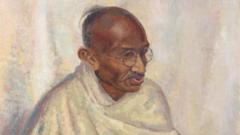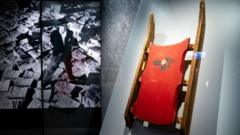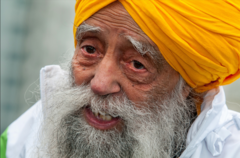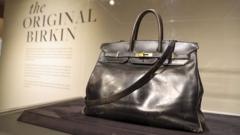A one-of-a-kind oil portrait of Mahatma Gandhi, painted in the UK during the height of his fight for Indian independence, is gearing up to be auctioned at Bonhams in London. This significant artwork, created by British artist Clare Leighton, is believed to be the only oil portrait for which Gandhi himself sat. The painting was developed when Gandhi visited London for essential discussions on India's self-governance during the second Round Table Conference in 1931.
A Rare Portrait of Mahatma Gandhi to Hit the Auction Block in London

A Rare Portrait of Mahatma Gandhi to Hit the Auction Block in London
An iconic oil painting of India's founding father, Mahatma Gandhi, painted in 1931, is set for auction next month.
Leighton, who was among the few artists permitted to meet and create sketches of Gandhi, had the opportunity to interact with him personally. Her artwork remained within her family until her passing in 1989, and it emphasizes Gandhi’s philosophies and significance. Caspar Leighton, Clare's great-nephew, expressed hope that this painting might gain more visibility and appreciation around the globe, especially in India.
The oil portrait was first showcased alongside sketches of Gandhi at an exhibition in London in late 1931 attended by several Indian leaders. The artistic expression and symbolism in the painting reflect Gandhi's stature and the ideals he represented. However, the portrait faced adversity, being reportedly damaged in a 1970s knife attack allegedly committed by a Hindu activist. Following restoration efforts, the piece remains a vital cultural artifact linked to Gandhi's legacy, stirring mixed sentiments around his complex historical role.
The auction is expected to not only highlight Gandhi’s contributions but also incite discussions concerning his historical impact and the ongoing debates surrounding his legacy within contemporary Indian society. Ultimately, the portrait represents a pivotal point in history and an opportunity for collectors and art enthusiasts to engage with a piece that has deep roots in the fabric of India's struggle for independence.
As the auction date draws near, anticipation builds among art historians and collectors alike, eager to bid on this rare representation of one of the most revered figures in global history.
The oil portrait was first showcased alongside sketches of Gandhi at an exhibition in London in late 1931 attended by several Indian leaders. The artistic expression and symbolism in the painting reflect Gandhi's stature and the ideals he represented. However, the portrait faced adversity, being reportedly damaged in a 1970s knife attack allegedly committed by a Hindu activist. Following restoration efforts, the piece remains a vital cultural artifact linked to Gandhi's legacy, stirring mixed sentiments around his complex historical role.
The auction is expected to not only highlight Gandhi’s contributions but also incite discussions concerning his historical impact and the ongoing debates surrounding his legacy within contemporary Indian society. Ultimately, the portrait represents a pivotal point in history and an opportunity for collectors and art enthusiasts to engage with a piece that has deep roots in the fabric of India's struggle for independence.
As the auction date draws near, anticipation builds among art historians and collectors alike, eager to bid on this rare representation of one of the most revered figures in global history.

















